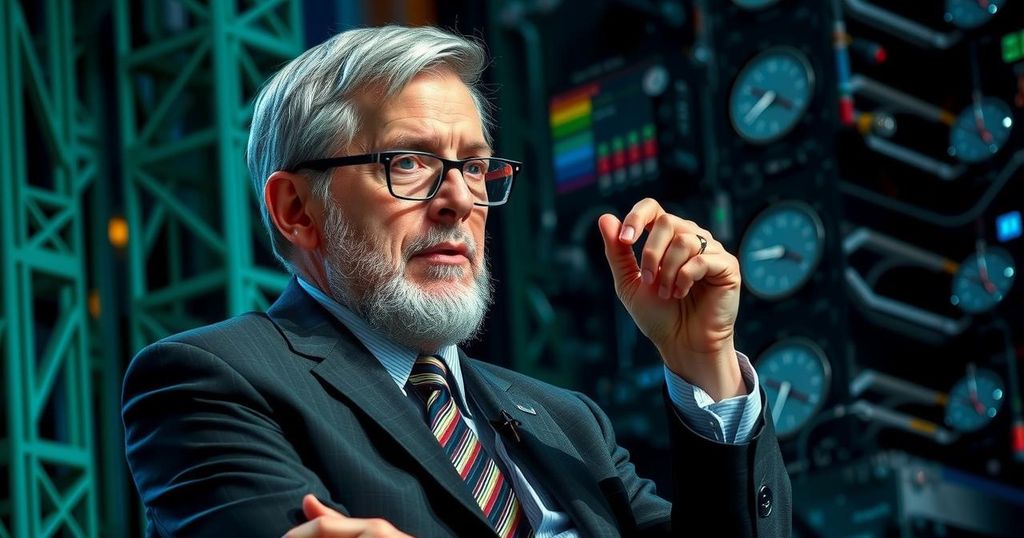John Malone criticizes the dominance of big tech companies, calling them “almost monopolies” and advocating for increased mergers within traditional media to enhance competition and service quality. He attributes current market inequities to net neutrality regulations, which favor tech giants. Malone highlights concerns regarding local programming and the challenges posed by regulatory frameworks under current FTC leadership, reflecting broader anxieties in the media industry about the future.
John Malone, the chair of Liberty Media and a noted cable industry pioneer, has expressed strong criticism towards the unchecked dominance of big tech companies, which he describes as being “almost monopolies.” At a recent investor meeting, Malone argued that tying the hands of traditional media companies while permitting tech giants to control distribution freely is “inappropriate.” He advocates for broader mergers within the cable sector, specifically suggesting that Charter should combine with Comcast or Cox, to enhance service quality and reduce costs. Malone attributes much of the current market inequity to net neutrality regulations enacted by the FCC. These rules mandate equal treatment of all internet traffic, which he believes inadvertently favors large tech platforms by providing them with distribution channels without associated costs. Consequently, this shift leans more towards streaming, granting an advantage to companies like Amazon over traditional broadcasters, thus altering the media landscape. He also highlighted that major tech companies have reaped significant benefits from rising stock values, particularly due to advancements in artificial intelligence, leading to a concentration of economic power that poses significant challenges for regulators. Despite his concerns about the overarching influence of large tech corporations, Malone acknowledged the continued viability of sports investment as a critical factor that bridges both traditional and streaming media outlets. However, he cautioned that as programming becomes increasingly national or global in scope, local programming might suffer substantial damage. In the current regulatory climate, the Federal Trade Commission, led by Lina Khan, has been actively blocking mergers, which Malone suggests has created a chilling environment for deal-making, raising hopes among investors and CEOs for a potential shift in leadership that might facilitate mergers and acquisitions. Malone’s comments reflect a broader anxiety among media executives regarding the future of their industry in the face of expanding tech monopolies and stringent regulatory frameworks. The intricate balance between fostering competition and supporting traditional media companies remains a key topic of discussion among industry leaders.
The issue at hand revolves around the significant market power held by major technology firms, which many experts and industry leaders argue resembles monopolistic behavior. John Malone’s critiques reflect a growing frustration within traditional media sectors regarding regulatory policies that may inadvertently disadvantage them against these tech giants. The ongoing debate about net neutrality, the impact of artificial intelligence on the stock market, and the future of content distribution are critical elements driving this discourse. Additionally, the regulatory landscape is currently unsettled, with leadership in agencies like the Federal Trade Commission under scrutiny regarding their stance on mergers and acquisitions across various industries, significantly affecting both traditional and tech sectors.
In conclusion, John Malone’s statements underscore a pressing concern within the media industry regarding the unchecked influence of large technology companies. His call for allowing mergers within the cable sector highlights a desire for increased competition and improved service quality. As regulators navigate the complexities of fostering a balanced marketplace, the ongoing struggles between traditional media and tech giants are expected to persist. The future of both sectors may hinge on regulatory shifts and the evolving landscape of content distribution.
Original Source: deadline.com

Leave a Reply